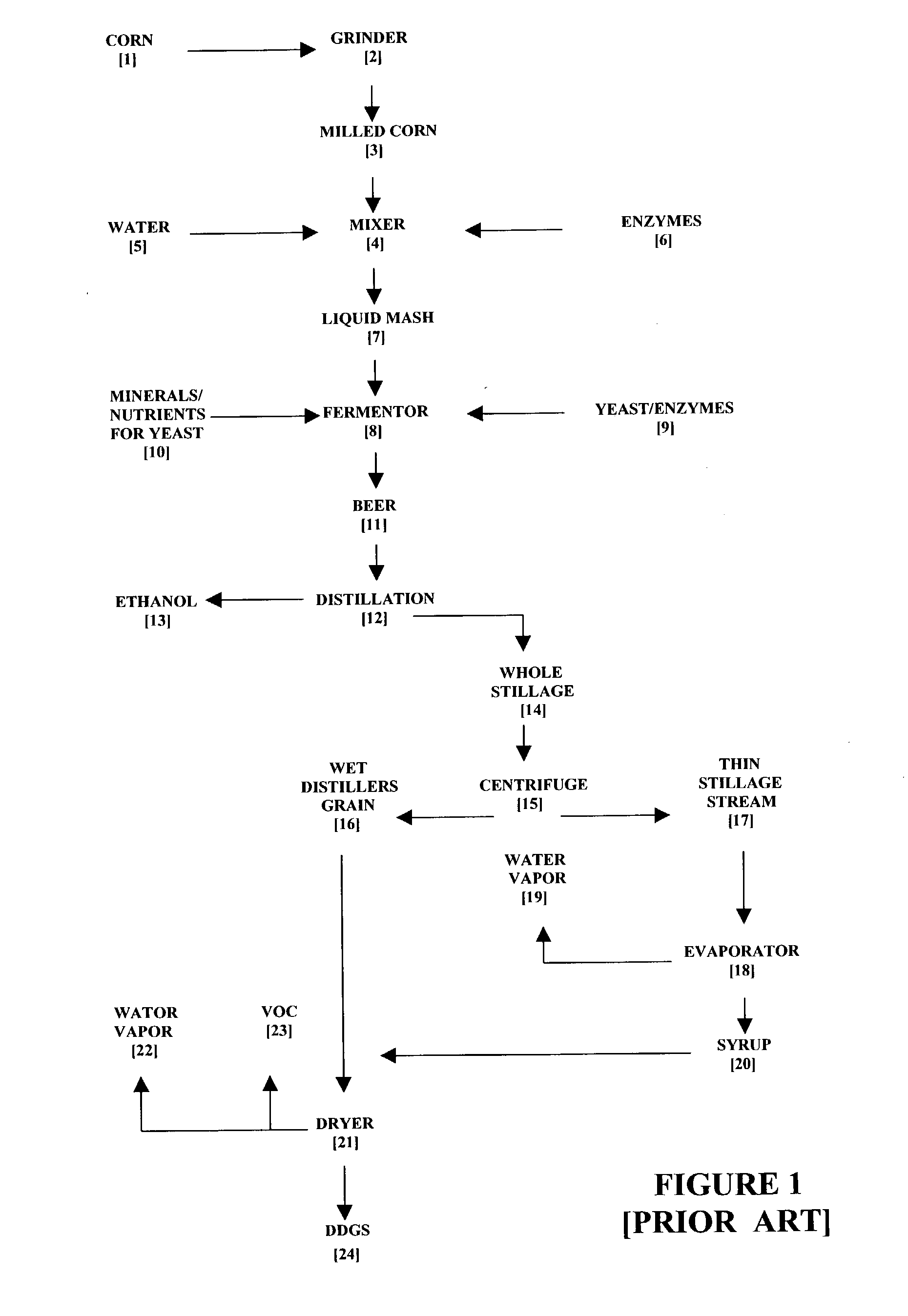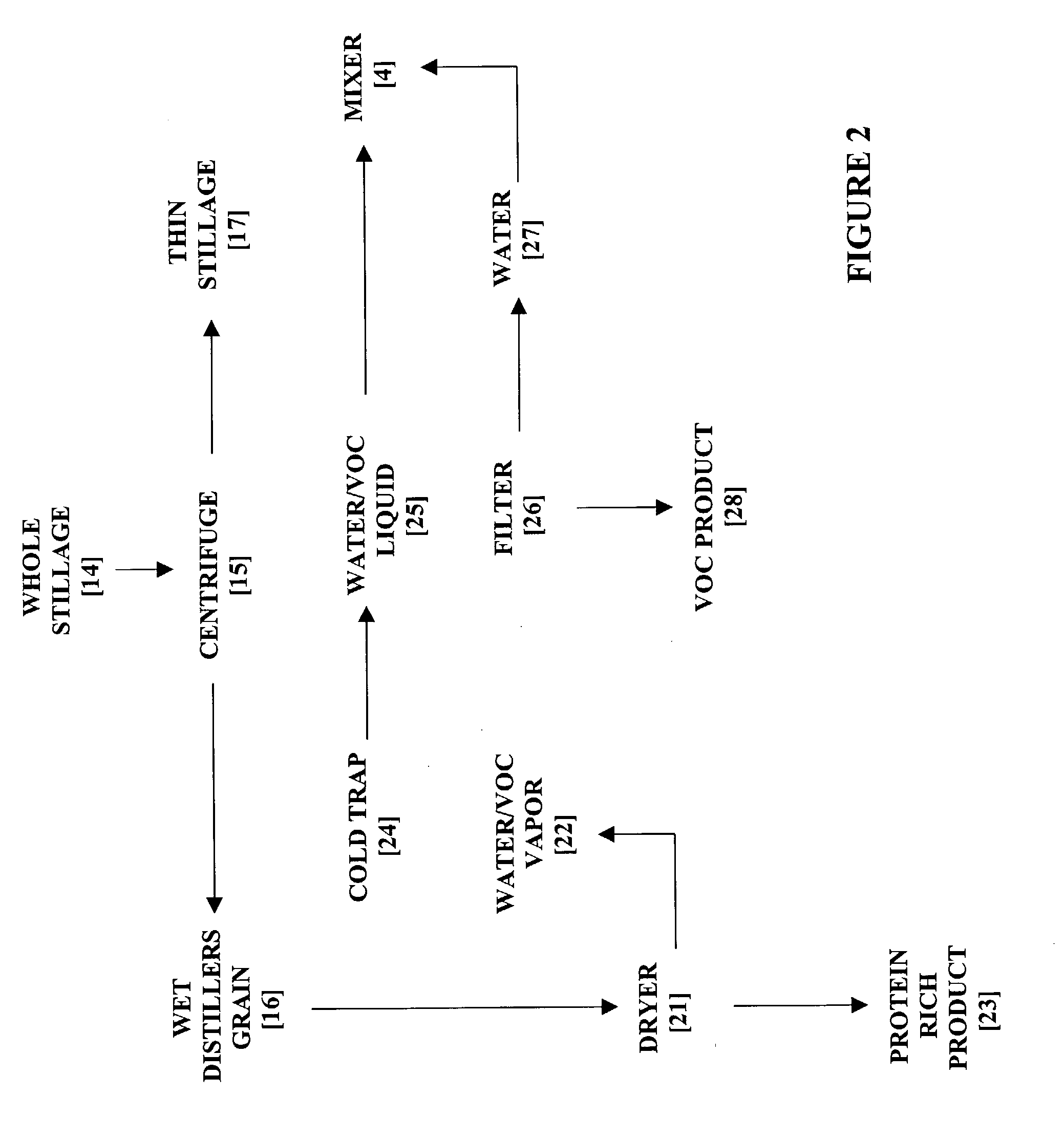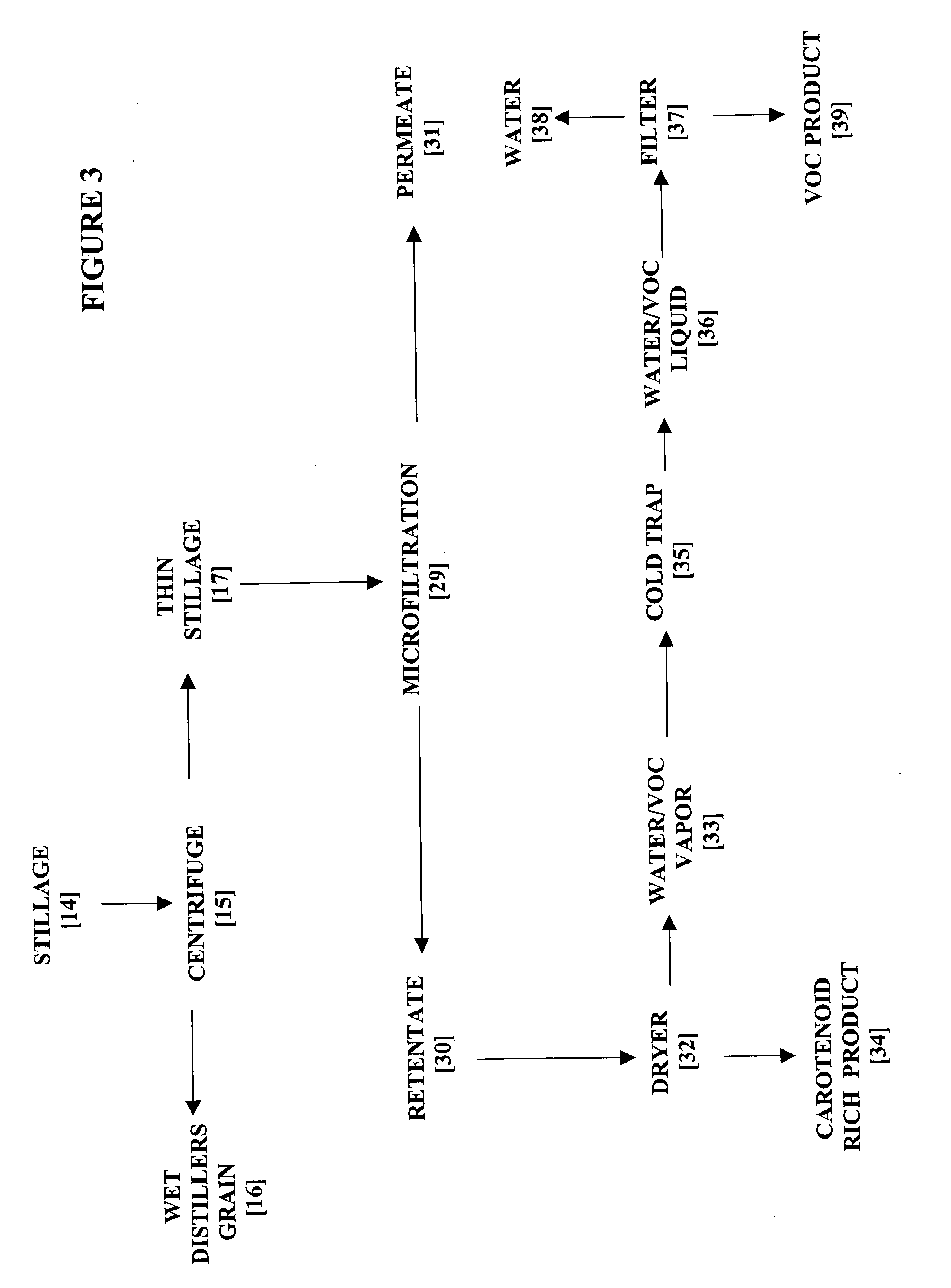Ethanol production process
a technology of ethanol production process and ethanol, which is applied in the direction of biofuels, fermentation, fatty-oil/fat production, etc., can solve the problems low economic value of ethanol, and energy cost to remove water from the whole stillage to produce a low value, so as to reduce maintenance costs, and reduce the amount of voc and other pollutants.
- Summary
- Abstract
- Description
- Claims
- Application Information
AI Technical Summary
Benefits of technology
Problems solved by technology
Method used
Image
Examples
Embodiment Construction
[0019] Without any intent to limit the scope of this invention, reference is made to the figures in describing the preferred embodiments of the invention utilizing corn as the starch containing feedstock. The process described herein can also be used with other starch containing feedstocks such as bagasse, sugar cane, grains, and other starch containing materials.
[0020] In a conventional ethanol production process as illustrated in FIG. 1, a starch-containing feedstock 1, such as corn, is fed to a grinder 2 to produce a milled corn 3. The milled corn 3 is then send to a mixer 4 where water 5, as well as enzymes 6, are added to produce a liquid mash 7. The liquid mash 7 is then sent to a fermentation vessel 8 where the desired yeast and additional enzymes 9, as well as the minerals and nutrients 10 necessary for efficient fermentation, are added. After the desired amount of fermentation has been completed the resulting product 11 commonly referred to as the “beer” is sent to a disti...
PUM
 Login to View More
Login to View More Abstract
Description
Claims
Application Information
 Login to View More
Login to View More - R&D
- Intellectual Property
- Life Sciences
- Materials
- Tech Scout
- Unparalleled Data Quality
- Higher Quality Content
- 60% Fewer Hallucinations
Browse by: Latest US Patents, China's latest patents, Technical Efficacy Thesaurus, Application Domain, Technology Topic, Popular Technical Reports.
© 2025 PatSnap. All rights reserved.Legal|Privacy policy|Modern Slavery Act Transparency Statement|Sitemap|About US| Contact US: help@patsnap.com



